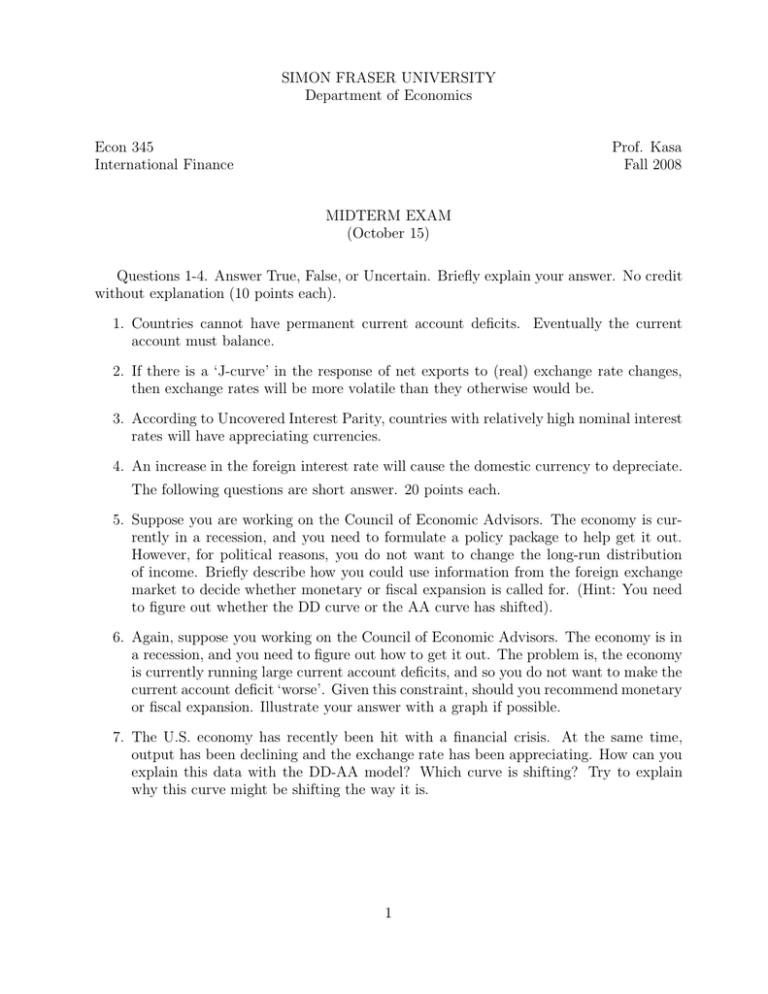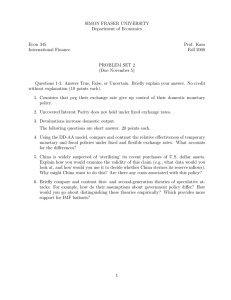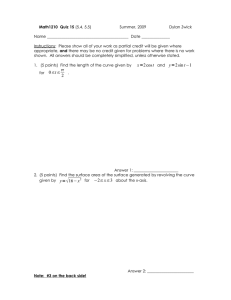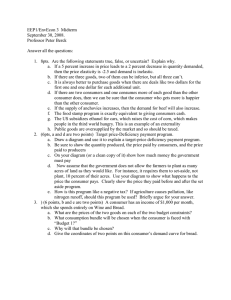SIMON FRASER UNIVERSITY Department of Economics Econ 345 Prof. Kasa
advertisement

SIMON FRASER UNIVERSITY Department of Economics Econ 345 International Finance Prof. Kasa Fall 2008 MIDTERM EXAM (October 15) Questions 1-4. Answer True, False, or Uncertain. Briefly explain your answer. No credit without explanation (10 points each). 1. Countries cannot have permanent current account deficits. Eventually the current account must balance. 2. If there is a ‘J-curve’ in the response of net exports to (real) exchange rate changes, then exchange rates will be more volatile than they otherwise would be. 3. According to Uncovered Interest Parity, countries with relatively high nominal interest rates will have appreciating currencies. 4. An increase in the foreign interest rate will cause the domestic currency to depreciate. The following questions are short answer. 20 points each. 5. Suppose you are working on the Council of Economic Advisors. The economy is currently in a recession, and you need to formulate a policy package to help get it out. However, for political reasons, you do not want to change the long-run distribution of income. Briefly describe how you could use information from the foreign exchange market to decide whether monetary or fiscal expansion is called for. (Hint: You need to figure out whether the DD curve or the AA curve has shifted). 6. Again, suppose you working on the Council of Economic Advisors. The economy is in a recession, and you need to figure out how to get it out. The problem is, the economy is currently running large current account deficits, and so you do not want to make the current account deficit ‘worse’. Given this constraint, should you recommend monetary or fiscal expansion. Illustrate your answer with a graph if possible. 7. The U.S. economy has recently been hit with a financial crisis. At the same time, output has been declining and the exchange rate has been appreciating. How can you explain this data with the DD-AA model? Which curve is shifting? Try to explain why this curve might be shifting the way it is. 1







